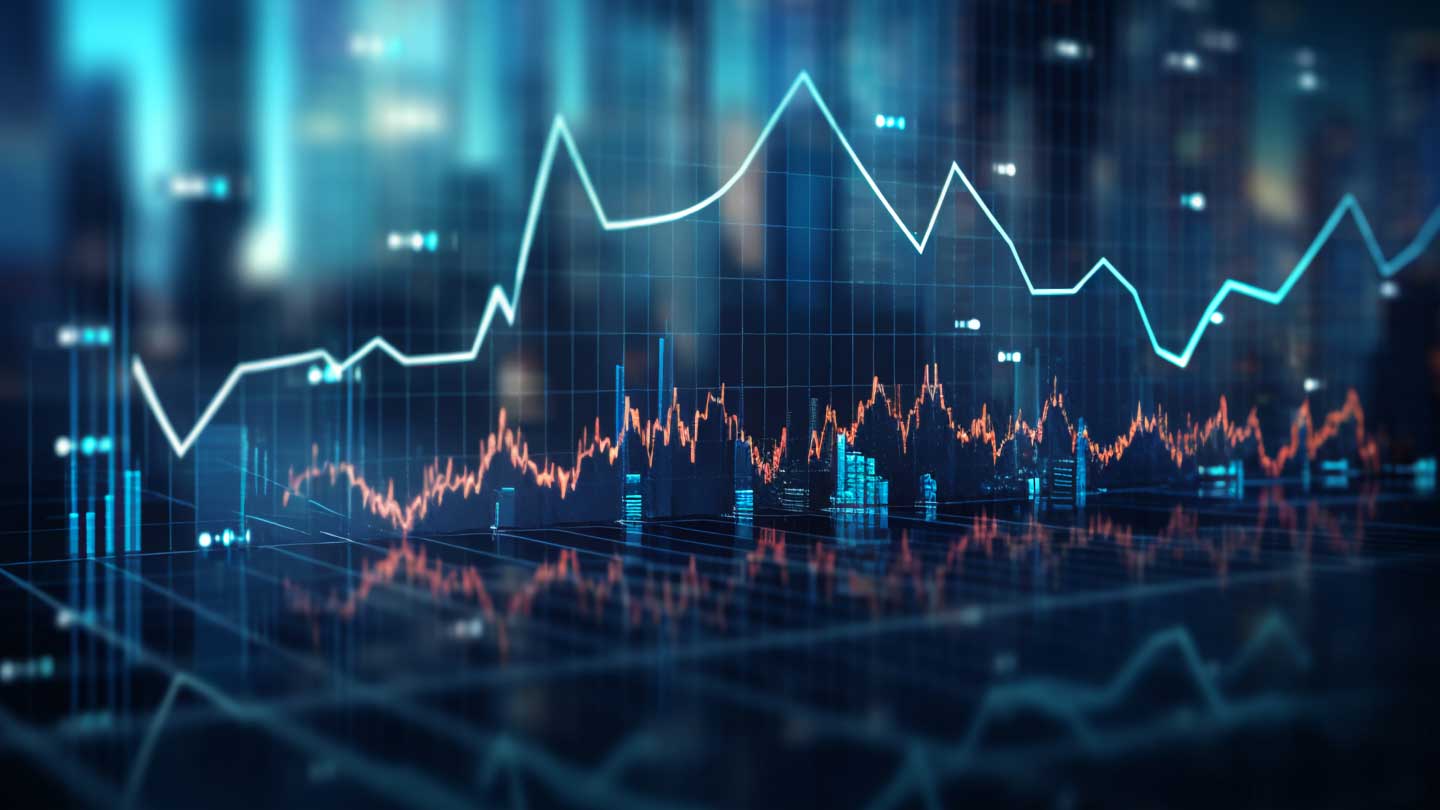
8 min read
Key takeaways
- With the dramatic change in the small and medium-sized enterprise (SME) payments ecosystem, it is critical for the financial industry to take decisive steps to bridge the lending gap.
- Trade digitization has the potential to drive efficiencies and expand opportunities for businesses. To do so, they’ll need to navigate regulatory changes at a global and local scale.
- Providing ready access to working capital will be the key to liquidity for all.
“Small and medium-sized enterprises help drive net-new job creation. They are key in developing emerging markets and GDP growth. So, it’s essential that they have access to credit.”

James Fraser
Global Head of Trade & Working Capital, Head of EMEA Payments, J.P. Morgan
Trend 1: Bridging the SME lending gap
The facts are clear—the lending gap is increasing for SMEs, impacting them as never before.
As of 2023, the gap is estimated to be $2.6 trillion, up from $1.5 trillion in 2020.2 Without access to capital, SMEs face cash shortages that limit their ability to meet demand and fulfill orders, and thereby threaten ongoing viability. Overlay today’s macroenvironment, and the lending gap increases. Key reasons for this gap include:
-
Risk appetite and capital considerations: Many SMEs do not meet required thresholds, due to limited credit history or irregular sales cycles. This leaves larger corporations, which generate higher revenue and have established credit history, with primary access to available financing over SMEs.
-
Cost of borrowing: With a higher level of risk and the current rate environment, higher margins are charged to compensate lenders, making financing too expensive for SMEs.
-
Accurate and reliable data: With less history and necessary data, it is difficult to assess SMEs’ creditworthiness.
“With an increased lending gap between large corporates and SMEs, it’s critical to address SMEs’ unmet liquidity needs and help unlock working capital.”

James Fraser
Global Head of Trade & Working Capital, Head of EMEA Payments, J.P. Morgan
What is J.P. Morgan doing to bridge the gap?
An extension of supply chain finance, pre-shipment finance provides options that offer liquidity to SMEs earlier in the production cycle prior to invoice generation. This helps improve liquidity to fulfill orders, eliminating delays in the supply chain. Credit enhancement offers also potentially increase the appetite and capacity of banks to provide this type of financing.
As part of our continued effort to make pre-shipment finance available to SMEs, J.P. Morgan is partnering with a community development financial institution to offer pre-shipment loans to smaller suppliers.
“We want to ensure SMEs have the working capital they need to advance technology, market products and create a seamless customer experience.”

Shahrokh Moinian
Head of EMEA Payments, J.P. Morgan
Trend 2: Digitizing trade
Global trade is one of the oldest methods of payment.
Today, however, as payments have rapidly evolved beyond cash transactions to innovative digital processes, trade has remained fairly archaic—still relying heavily on the use of paper document exchange and manual processes. However, this is all changing. With the increased adoption of legal and regulatory reform, allowing for the exchange of digital trade documents and data, the industry is advancing and rapidly adapting to the digital payments ecosystem.
This shift towards digital trade processes, standardization and secure data sharing has the potential to transform trade by:
- Improving efficiency and interoperability
- Mitigating risk
- Expanding into new markets globally
“Digitization offers massive efficiencies for trade. We’re completing processes that used to take 36 hours in three hours. This is the power of technology for old-school trade finance.”

Shahrokh Moinian
Head of EMEA Payments, J.P. Morgan
Moving to the next level
The industry has made great strides in digitizing manual and paper-heavy trade processes. The Middle East and Singapore set the stage for this transformation: Abu Dhabi Global Markets (ADGM) was one of the early adopters of the Model Law on Electronic Transferable Records (MLETR), and in 2021 executed the world’s first digital trade financing pilot with another MLETR jurisdiction. Singapore followed suit in 2022 with similar legal reform, as well as the UK with the recent passing of the Electronic Trade Documents Act in September of 2023.3
This legislation has opened the door to enhance and digitize many trade processes, but is a mere catalyst to the future of digital trade.
Looking ahead, the digital transformation of trade goes beyond digital negotiable instruments and looks to revolutionize ways in which data can be securely shared throughout both the physical and financial supply chain. From transport and logistics to payments and processing, the possibilities to further promote interoperability, enhance efficiency and harmonize dozens of trade documentary processes is nearly endless. The next phase will focus on implementing standardized identifiers and digital standards across key trade documents to ensure seamless, end-to-end data communication, sharing and validity.
This is an exciting time in the transformation of trade, and we continue to actively engage in being at the forefront of that change.
Trend 3: The impact of geopolitical tensions
With the continuation of both the Israel-Hamas war and the Russia-Ukraine war, the global economy is potentially facing a heightened risk environment, due to the inflationary effects from lower regional trade volume in the Middle East and Europe. This includes tighter financial conditions, commodity price shocks and higher energy costs, coupled with lower consumer confidence and demand.
While the full impact of the rising tension on the Middle East is still unknown, companies are facing the reality that they will need liquidity in order to be agile in the event tensions worsen and timely access to potentially higher-priced commodities and raw material exports, such as natural gas, oil and even timber, are impacted further.
The cost of working capital tied up in the supply chain is significantly greater than in the past, with $633 billion in potential liquidity currently trapped for S&P 1500 companies.4 The opportunity to be agile and quickly help de-risk supply chains comes with ready access to this working capital.
Trend 4: U.S. shifts trade focus to LATAM
As tensions continue to rise with China, Mexico has become the number one trading partner with the U.S.
Latin America’s proximity to the U.S., the number of free trade agreements in the region and competitive labor costs offer advantages for multinational corporations seeking to diversify and build resilience into their supply chains. As a result, several major corporations are now exploring sourcing opportunities in markets such as Chile, Colombia, Costa Rica, Brazil and Mexico.
Talks of the Trade with James Fraser
Watch James and special guest Peter Zeihan, geopolitical strategist, thinker, and futurist as they discuss the evolution of globalization, and the impacts of current and projected geopolitical and economic challenges to global trade and beyond.
Trend 5: Exploring supply chain finance in the face of a high-interest rate environment
A combination of stubborn inflation, elevated interest rates and declining consumer demand may continue to stifle growth.
In 2022, inflation hit a 40-year high, peaking at 9.1% in the U.S. and 11.5%4 in Europe. In an effort to offset the rapid rate of inflation, the Federal Reserve increased the fed funds rate by more than 5% between 2022-2023.5 Despite this unprecedented monetary tightening and elevated interest rates, inflation is just beginning to show signs of cooling, while both the cost of goods and cost of borrowing still remain high.6 Though the global economy remained fairly resilient despite these factors in 2023, the outlook for continued growth in 2024 remains uncertain.
In the face of this uncertainty, businesses need to shift their focus from relying on financing to strong balance sheet management and ready access to liquidity. Supply Chain Finance (SCF) will remain a key working capital solution, as it is an inexpensive financing and efficient liquidity option for both buyers and suppliers.
The bottom line...
Continued inflation, increased tensions in the Middle East and a higher-rate environment will directly impact consumer buying habits and companies’ ability to access financing.
Ready access to working capital will be the key to unlocking necessary liquidity for both large corporations and SMEs to build resiliency in the face of this macroeconomic and geopolitical uncertainty.
icon
Loading...
References
Closing the funding gap: The case for ESG incorporation and investing with sustainability outcomes in emerging markets, Principles for Responsible Investment
Trade Finance Gap rises to $2.5 trillion USD – five key takeaways from the ADB’s latest report on trade finance gaps, growth, and jobs, Trade Finance Global, September 6, 2023
Strategies for resiliency: Working Capital Index 2023, August 18, 2023
Federal Funds Rate History 1990 to 2023, Forbes, Oct. 17, 2023
Member FDIC. Deposits held in non-U.S. branches are not FDIC insured. All rights reserved.
The statements herein are confidential and proprietary and not intended to be legally binding. Not all products and services are available in all geographical areas. Visit jpmorgan.com/paymentsdisclosure for further disclosures and disclaimers related to this content.







